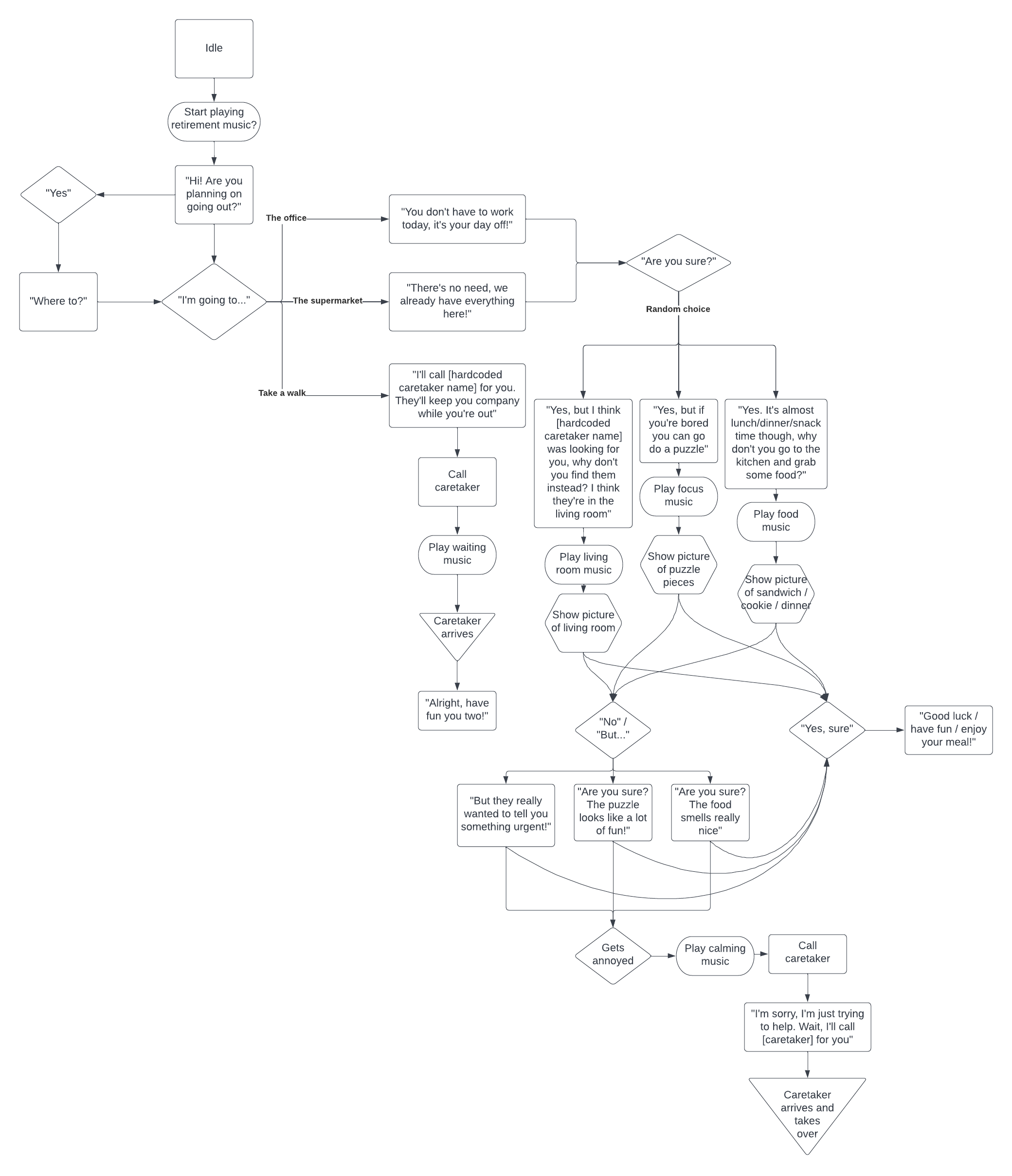Prototype
For our evaluation, we need a prototype for first interactions with participants. We decided to implement a vertical prototype that shows one slice of the full functionality. Because not all functions could be implemented in detail, we need to hardcode some parts. Therefore our prototype is working as a 'wizard of Oz'.
We also need a control condition to test if the provided dialogues and music are the reason why a person stays. Hence we are using a different prototype as well, which is less intelligent. Both prototypes are described in detail below.
Intelligent:
The robot tries to stop the user from leaving the building with the use of dialogues and music. The dialogue should bring the user back to reality or distract them with an activity. Music will be used to underline a mood or trigger a reminder for a certain activity.
Still, it is only a prototype and has limited possibility to react to users' answers, for example:
- the robot knows only 3 reasons to leave the care home: going for a walk, go to supermarket, go to office
- the robot only suggests 3 different activities to distract people from leaving: going to living room, doing a puzzle, or having a coffee
(for more details see FlowChart below).
Unintelligent:
This less intelligent robot does not play music nor supports complex dialogues. It tries to stop the user from leaving by saying 'I'm sorry, you cannot leave' and actively blocks the door so that the user cannot leave. The blocking is done by moving accordingly to the users movements. An important function of this robot is an emergency function, that detects when the user gets angry and aggressive. In this case, he should go out of his way to prevent damage to user and robot.
We are using this as a control condition to compare between a 'human-social' and a 'physical' way to prevent people from leaving.
Flow Chart for intelligent Robot
For the intelligent prototype, we created a flowchart. It shows which dialogues are provided and the variety of possible reactions.
Ethics
(summary of last lecture + usage in our project)
Human Research Ethics Committee (HREC)
- Committee from TU Delft, Available via TU Delft webpage
- Before starting the experiment, it (normally) has to be approved by the ethics committee
- example Informed consent is provided on the webpage
- Data management plan (DMP)
- User's right:
- Know their tasks and goals
- Have access to outcomes of the study
- Privacy and anonymity
- Can quit participation at any time
For our evaluation, we didn't need a form for informed consent, since most of our participants were friends or students from the SCE course.
However, we informed them about what to expect from our evaluation, what will happen, how long it will take and that pepper might do some unexpected movements with its' arms.
